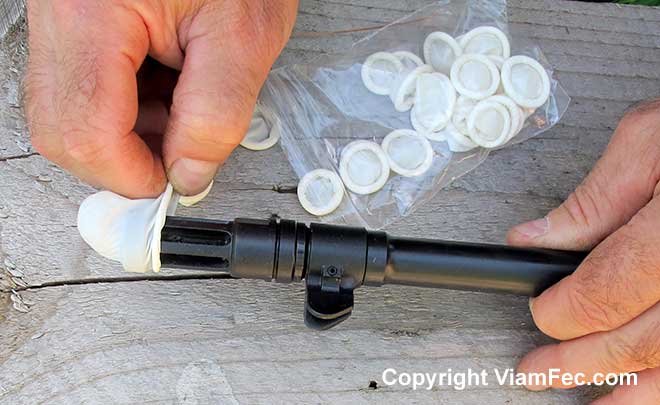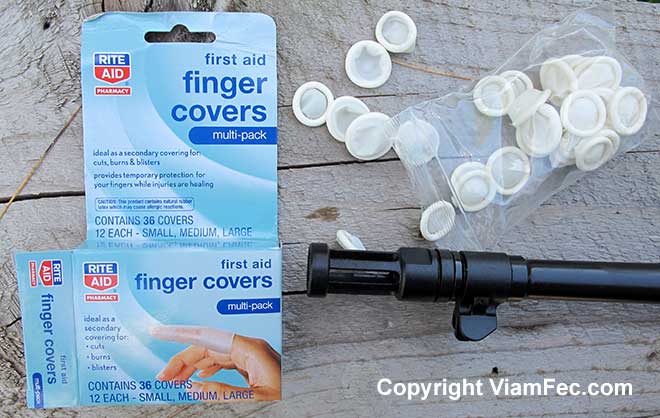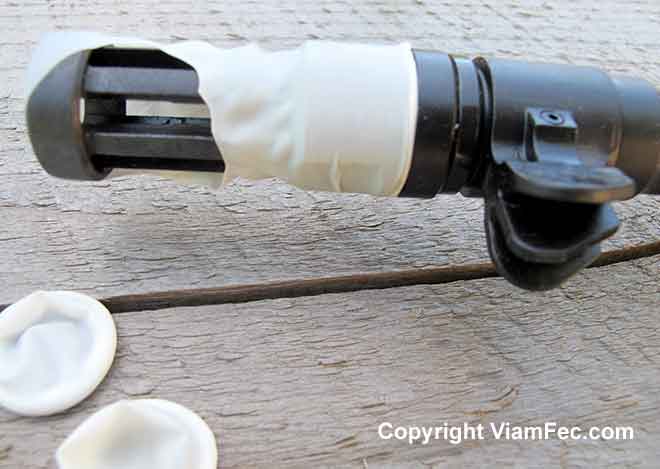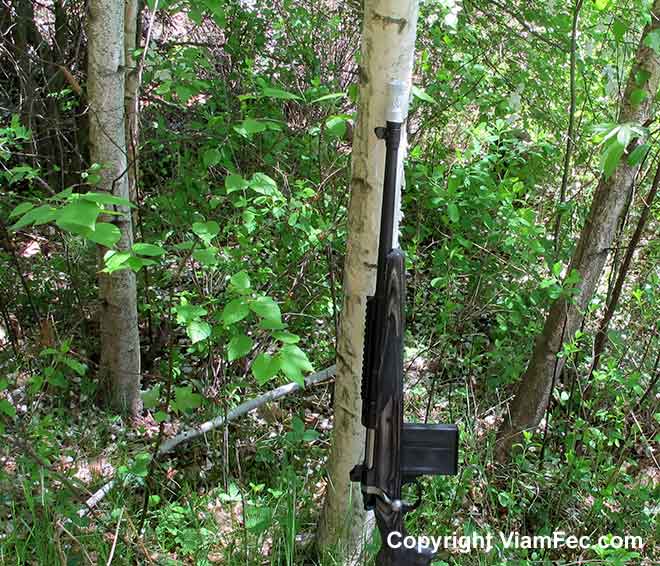
If you read Mount Surprise Scout 3 you may have noticed that the flash hider on my Scout Rifle was covered with something of a white color.
It was raining heavily that day so I covered the open barrel of the rifle to prevent rain and debris from getting inside. Being familiar with what some people call “finger bandages” or “finger covers”, I purchased a box of 36 from a drug store in town for about $5.00 in US fiat currency.
Finger Covers as Rifle Barrel Covers
The Scout is always more than ready to repurpose anything to the job at hand. As long as it is available, is efficient, and works that is all we need to know.
Finger covers look pretty much like very small condoms, and are used for a variety of purposes such as protecting finger injuries and taking care of sick pets, etc. However these covers can also serve to cover rifle barrels against rain, dew, debris, insects or whatever else may want to travel down the bore of a rifle.
To use, simply unroll the finger cover down the shaft of the rifle barrel as you would it’s larger cousin down another shaft you may be familiar with.

When the rifle is fired, exiting gases will easily blow the cover off the end of the barrel with no perceivable effect on the accuracy of the bullet.
Are Finger Covers the Rifle Barrel Cover Solution?
In my experience finger covers repurposed as ad hoc rifle barrel covers are mediocre at best for this particular task.
A Scout Rifle is subjected to harsh treatment when bushwhacking through thick forest in mountainous regions. The cover tends to tear quite readily when punctured by twigs or scraped lightly against the bark of a tree – virtually unavoidable under these conditions.
In addition, the flash hider on my scout rifle has rather sharp edges and I’ve broken a number of finger covers while trying to unroll them down the rifle barrel.
Once a small tear occurs in the finger cover, it will often continue opening up – resulting in complete failure.

Camouflage Rifle Barrel Covers
Another problem with using finger covers as rifle barrel covers is that they seem to be available only in the color white.
While there are naturally white objects in the Great North Woods – for example the bark of paper birch trees, some species of flowers, and snow – there are many instances where if someone were looking for you they may just notice that small area of white in an otherwise darker background.
That splotch of white can appear to an onlooker as a beacon lighting the way to your position.

I toyed with the idea of using colored markers to easily change the covers from white to a camo pattern. However because they break so easily I think I may discard their use for this purpose altogether as I think I have come up with something better which I will try on my next Viam Fec scout.
That will be the subject of a future post.